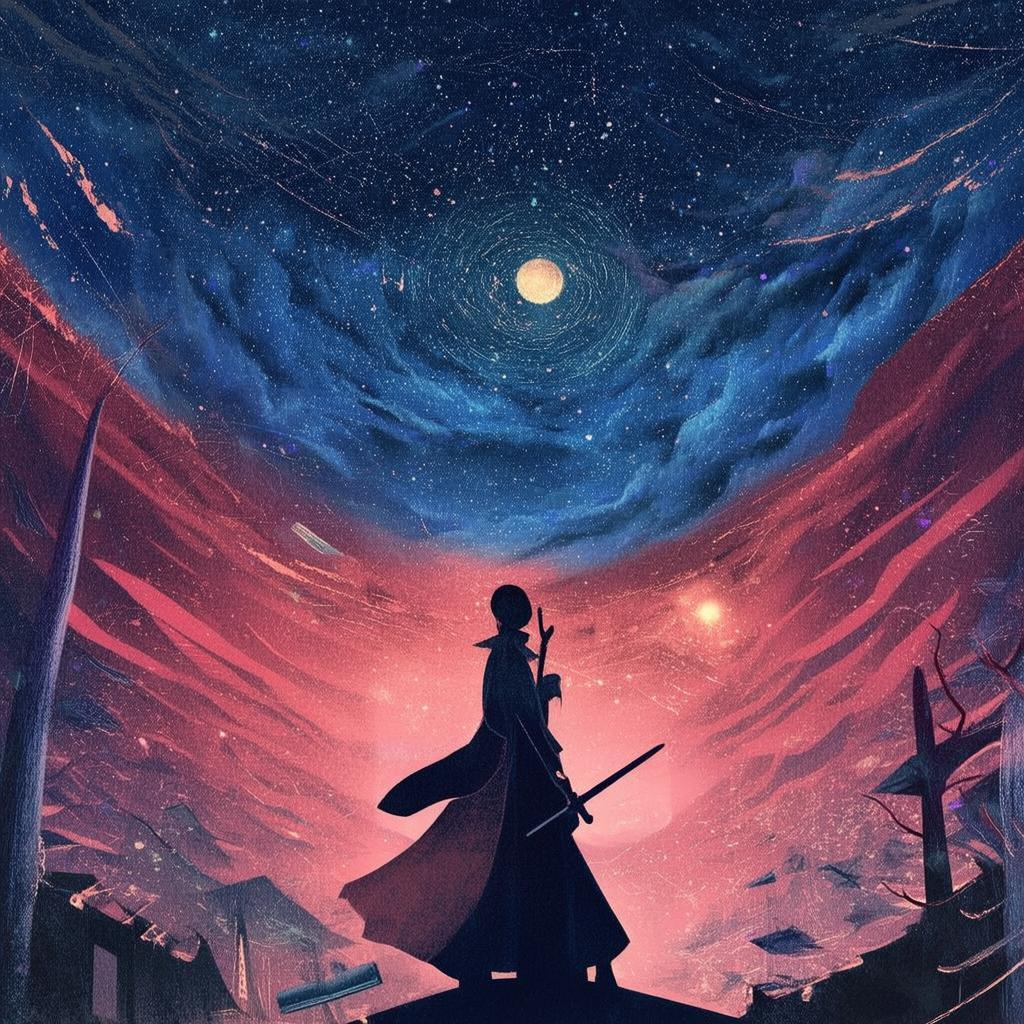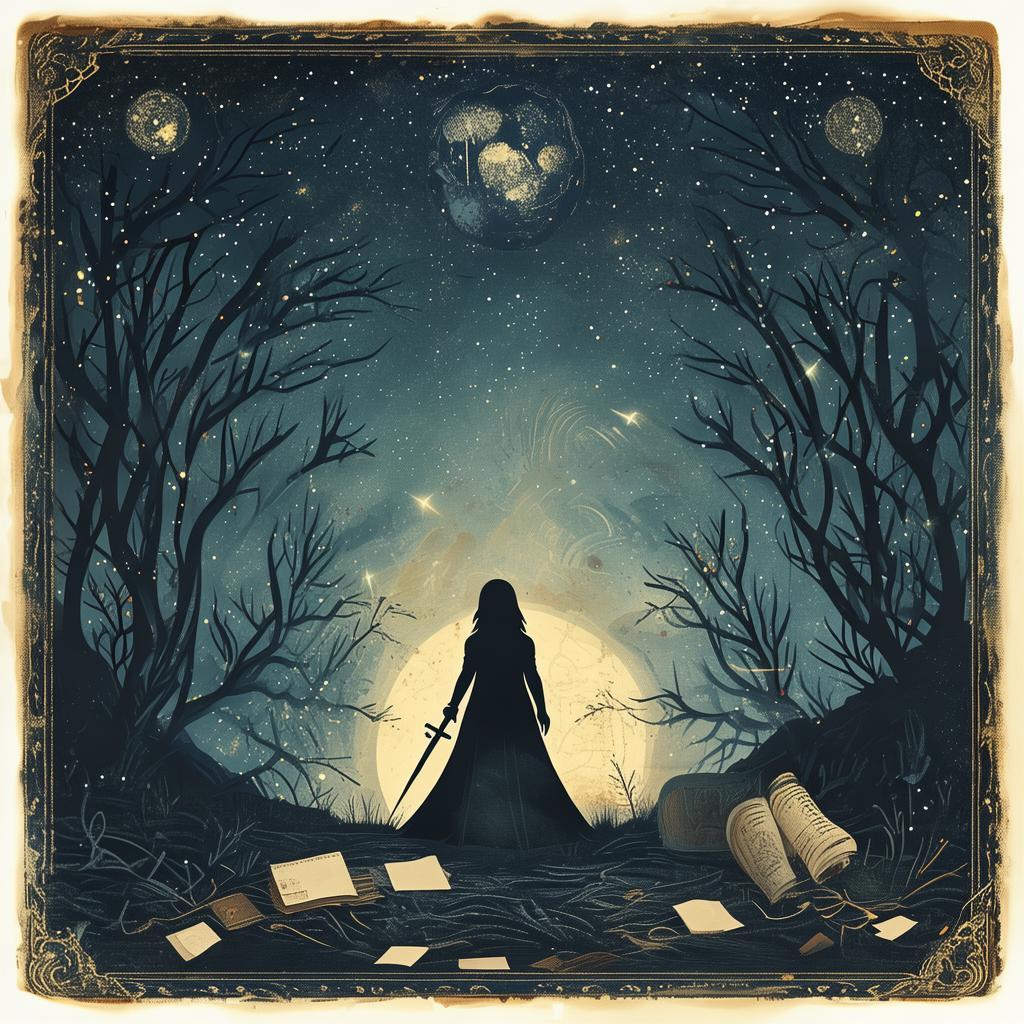Quantum Convergence: The Relativistic Paradox
The clock tower stood tall in the heart of the quaint town of Relativity Falls, its hands frozen at 12:30, a constant reminder of the peculiar anomaly that had baffled scientists for decades. The town was a curious amalgamation of the familiar and the fantastical, with cobblestone streets lined with peculiar shops and a library that seemed to contain the secrets of the universe.
Amara, a young and ambitious physicist, had grown up in Relativity Falls, her curiosity piqued by the town's peculiarities. Her father, a retired physicist, had instilled in her a love for the unknown and a relentless pursuit of answers. Now, as she stood before the clock tower, her gaze was fixed on the frozen hands, a symbol of the unsolved riddle that had haunted her since childhood.
The riddle was simple yet enigmatic: "If you travel at the speed of light, does time stand still, or does it accelerate?"
Amara had spent years studying the theories of quantum physics and relativity, but the riddle remained unsolved. It was during one of her research sessions that she stumbled upon a peculiar phenomenon: a set of equations that seemed to suggest that time could flow in two directions simultaneously, creating alternate realities.
Determined to prove her theory, Amara set up an experiment in her father's old laboratory, a place filled with relics of his past endeavors. She used a particle accelerator to generate particles that would travel at near-light speeds, hoping to observe the effects on time dilation.
As the particles zoomed through the accelerator, Amara monitored the readings with a mix of excitement and trepidation. The data was conclusive: time was indeed flowing in two directions, creating a paradox that threatened to unravel the fabric of reality.
The paradox was this: if time could flow in two directions, then it was possible for events to occur simultaneously in two different realities. This meant that Amara's own existence was not the only one; there were countless others, each with their own version of reality, and each with its own set of rules.

Amara's discovery had profound implications. If the paradox were to be resolved, it would require her to make a choice that would affect the course of history. She had to decide which reality would survive, and which would be lost to the void.
The clock tower began to chime, a reminder that time was running out. Amara knew that she had to act quickly. She had to find a way to prevent the paradox from causing a catastrophic event that would destroy all realities.
With the help of her best friend, Leo, a tech-savvy hacker, and her father's old mentor, Dr. Hargrove, Amara embarked on a race against time. They had to navigate through the alternate realities, each more dangerous and unpredictable than the last, to find a way to resolve the paradox.
Their journey took them to a reality where the sun was a dead star, to another where humanity had evolved into beings of pure energy, and to yet another where the laws of physics were entirely different. Each reality presented new challenges and dangers, and Amara had to rely on her intelligence and the support of her friends to overcome them.
As they delved deeper into the alternate realities, Amara began to question her own role in the paradox. She realized that she was not just a scientist, but a guardian of the fabric of reality itself. Her decision would determine the fate of all existence.
The climax of their journey occurred in a reality where time had been twisted into a spiraling vortex, threatening to consume all realities. Amara and her friends had to confront the core of the paradox, a being known as the Time Eater, a creature that fed on the energy of time itself.
In a dramatic showdown, Amara managed to outsmart the Time Eater, using her knowledge of quantum physics and relativity to trap it within a temporal singularity. With the creature contained, the paradox began to unravel, and the fabric of reality began to stabilize.
The clock tower struck midnight, and as the hands moved forward, Amara knew that her work was done. The paradox had been resolved, and all realities were safe. She had become a guardian of the universe, a protector of the fabric of reality itself.
In the aftermath, Amara returned to her own reality, her life changed forever. She knew that the world would never be the same, and that her discovery would change the course of history. But she also knew that the adventure was just beginning, and that there were still mysteries to uncover, realities to explore, and paradoxes to resolve.
As she stood before the clock tower, Amara looked up at the hands that were now moving in perfect harmony. She had faced the ultimate challenge and emerged victorious, a hero in her own right. And as she gazed into the night sky, she knew that the universe was vast and full of wonders, and that her journey was far from over.
The story "Quantum Convergence: The Relativistic Paradox" weaves a tapestry of quantum physics, relativity, and alternate realities, all while exploring themes of choice, responsibility, and the power of friendship. It is a tale of discovery, adventure, and the eternal quest for understanding the mysteries of the universe.
✨ Original Statement ✨
All articles published on this website (including but not limited to text, images, videos, and other content) are original or authorized for reposting and are protected by relevant laws. Without the explicit written permission of this website, no individual or organization may copy, modify, repost, or use the content for commercial purposes.
If you need to quote or cooperate, please contact this site for authorization. We reserve the right to pursue legal responsibility for any unauthorized use.
Hereby declared.









